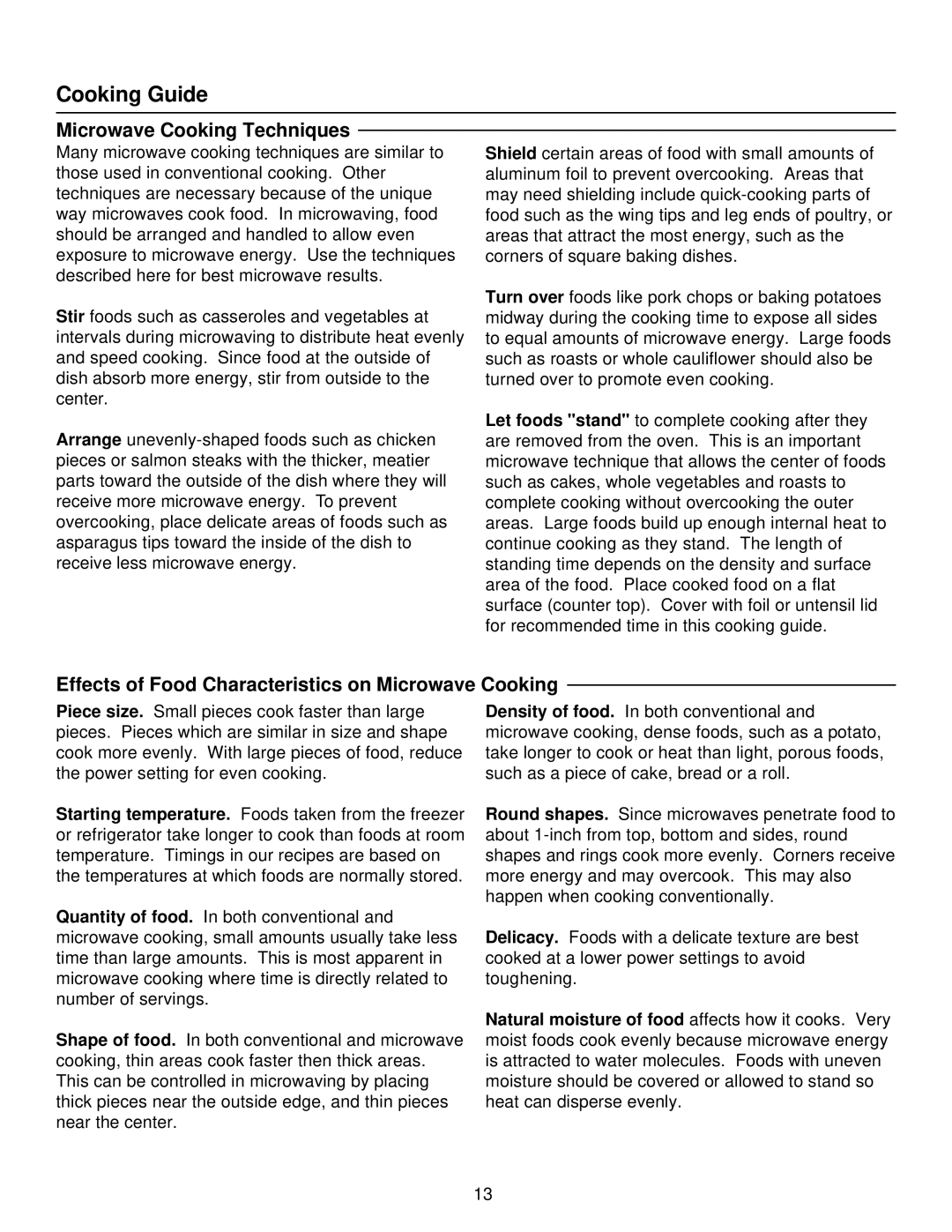ME96T, MW96T, FE116T specifications
The Amana FE116T, MW96T, and ME96T are three versatile appliances that reflect the brand's commitment to innovation, efficiency, and user convenience. These models cater to a wide range of cooking needs, making them suitable for both everyday use and special occasions.The FE116T is a standout model known for its exceptional baking capabilities, featuring a powerful convection oven that ensures even heat distribution. This technology allows for faster cooking times and enhances the flavor and texture of baked goods. With multiple rack positions, users can customize the oven space to accommodate various sizes of dishes simultaneously. The FE116T also includes a self-cleaning option, which simplifies maintenance and saves time for busy users.
The MW96T model focuses on microwave cooking, providing a sleek, compact solution that doesn't compromise on functionality. This microwave comes equipped with smart sensor technology that automatically adjusts cooking times and power levels based on the moisture content of the food. This feature prevents overcooking and ensures perfectly heated meals. The MW96T also includes a variety of pre-programmed cooking presets, making it easy for users to prepare popcorn, reheating leftovers, or cooking frozen meals with just the touch of a button.
The ME96T, on the other hand, is designed as a multifunctional appliance that combines the features of both baking and microwaving. It boasts a unique combination cooking mode that allows users to utilize both the microwave and oven features simultaneously, significantly reducing overall cooking times. This model is perfect for those who want to enjoy the benefits of convection cooking while still taking advantage of microwave speed.
All three models prioritize energy efficiency, with advanced insulation technology that helps maintain temperature and reduce energy consumption. The user-friendly control panels on each appliance make operation intuitive, with easy-to-read displays and convenient touch controls.
Overall, the Amana FE116T, MW96T, and ME96T reflect the brand's dedication to quality and innovation. Whether you are baking, reheating, or exploring new cooking methods, these models offer the versatility and performance needed to meet any culinary challenge, making them valuable additions to any kitchen.

